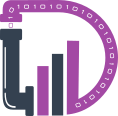The Importance of Data Cleaning and Pre-processing
Data is the lifeblood of analytics. However, before data can be used to draw insights and make informed decisions, it needs to be cleaned and preprocessed. Data cleaning and preprocessing are essential steps in the data analysis process that involve preparing raw data for analysis. In this blog post, we'll explore the importance of data cleaning and preprocessing in analytics and provide some best practices for ensuring that data is accurate and reliable.
Why is Data Cleaning and Pre-processing Important?
Data cleaning and pre-processing are important for several reasons. Firstly, they ensure that data is accurate and reliable. Raw data can contain errors, duplicates, and inconsistencies that can lead to inaccurate insights if not properly addressed. Secondly, data cleaning and preprocessing can help to reduce the risk of bias in the data. Bias can occur if certain data points are overrepresented or underrepresented in the data set. By cleaning and preprocessing the data, businesses can ensure that the data is representative of the population they are studying. Lastly, data cleaning and preprocessing can improve the efficiency of the data analysis process. By removing irrelevant data and consolidating duplicate data, businesses can reduce the amount of time it takes to analyze data and help to reduce the risk of data breaches and ensure that data is compliant with privacy regulations.

